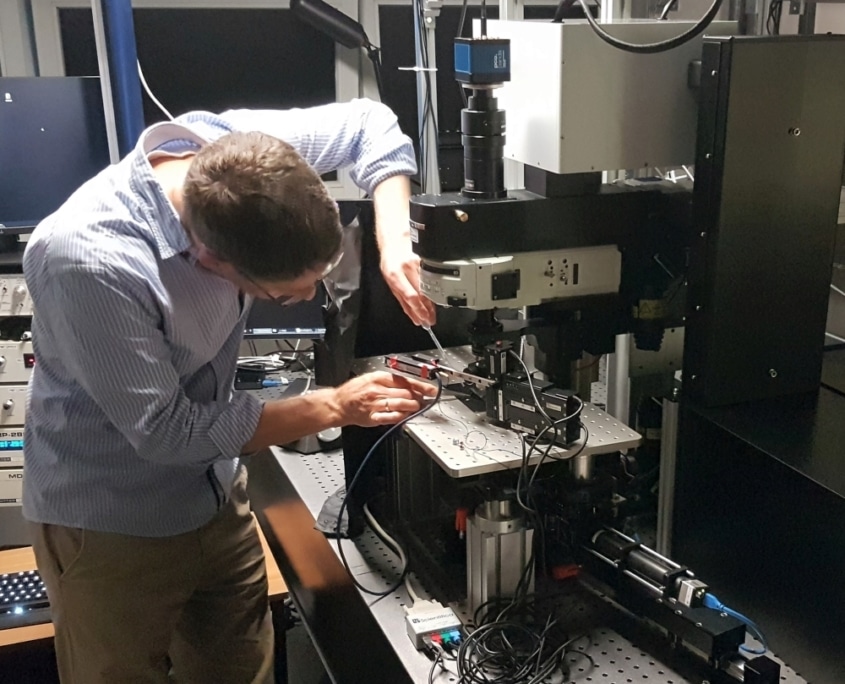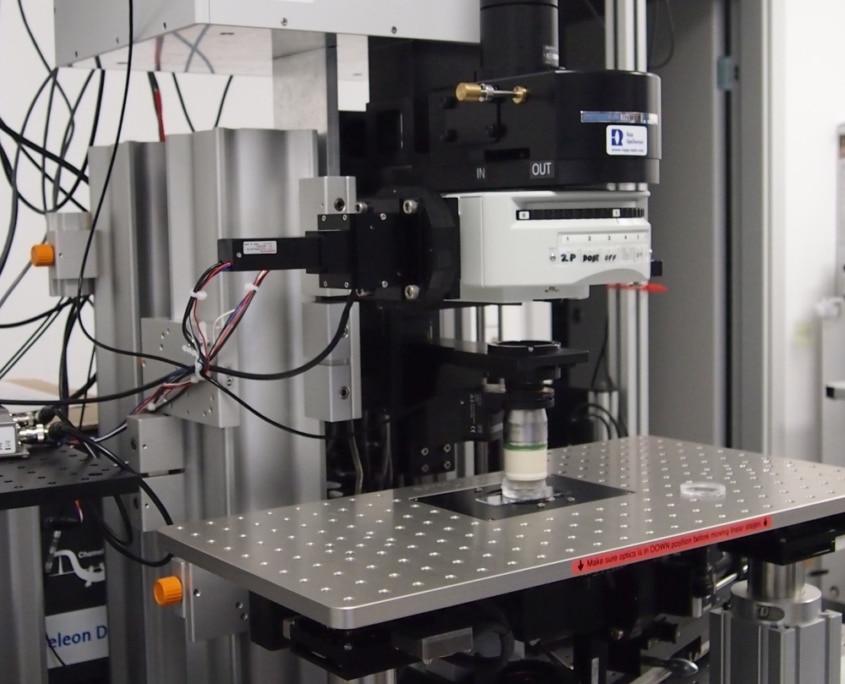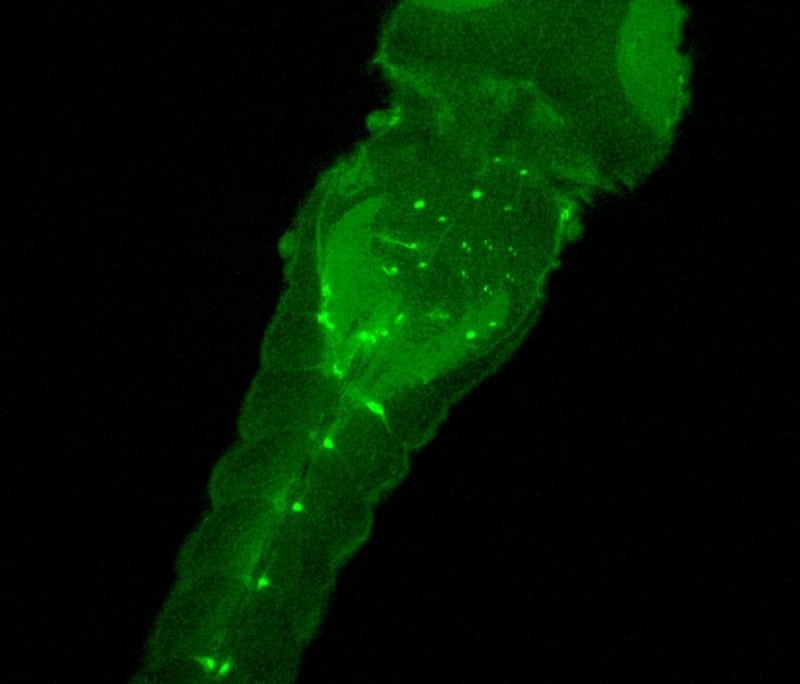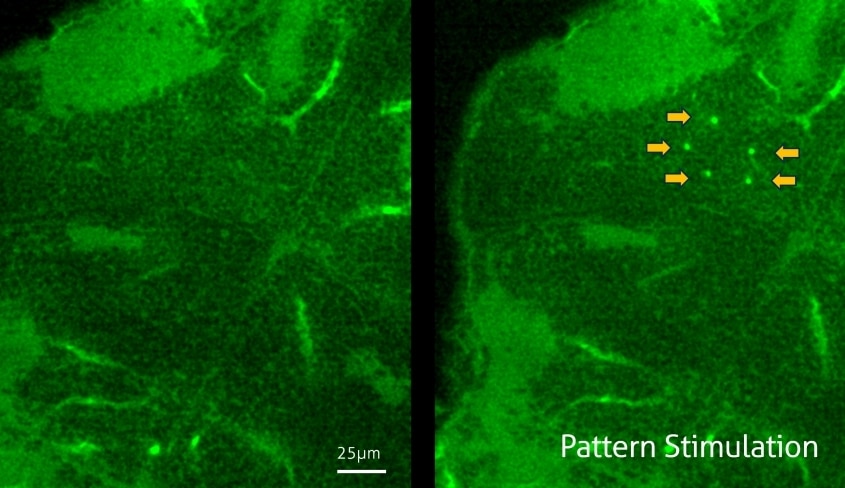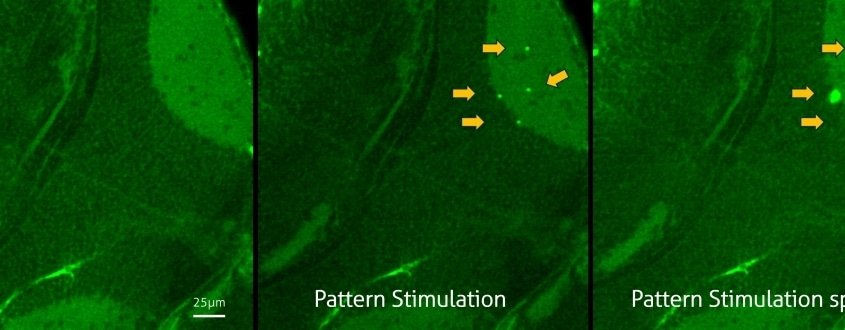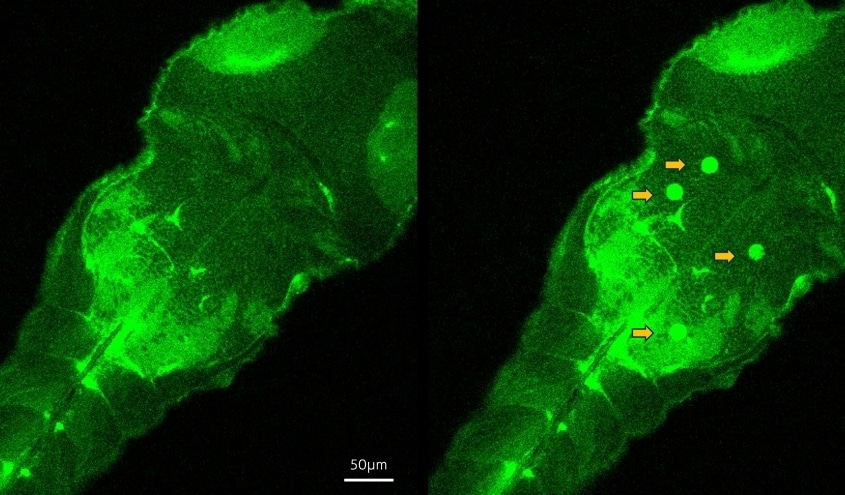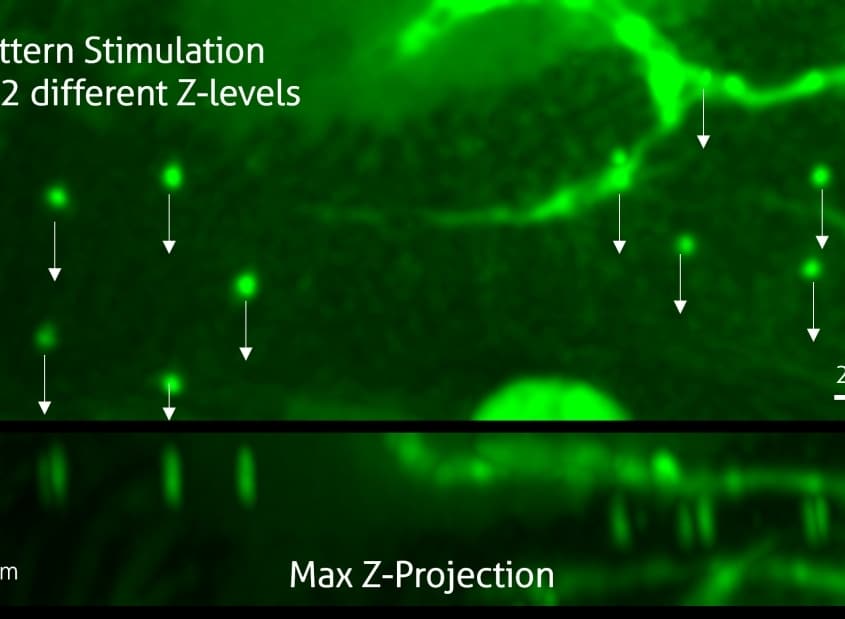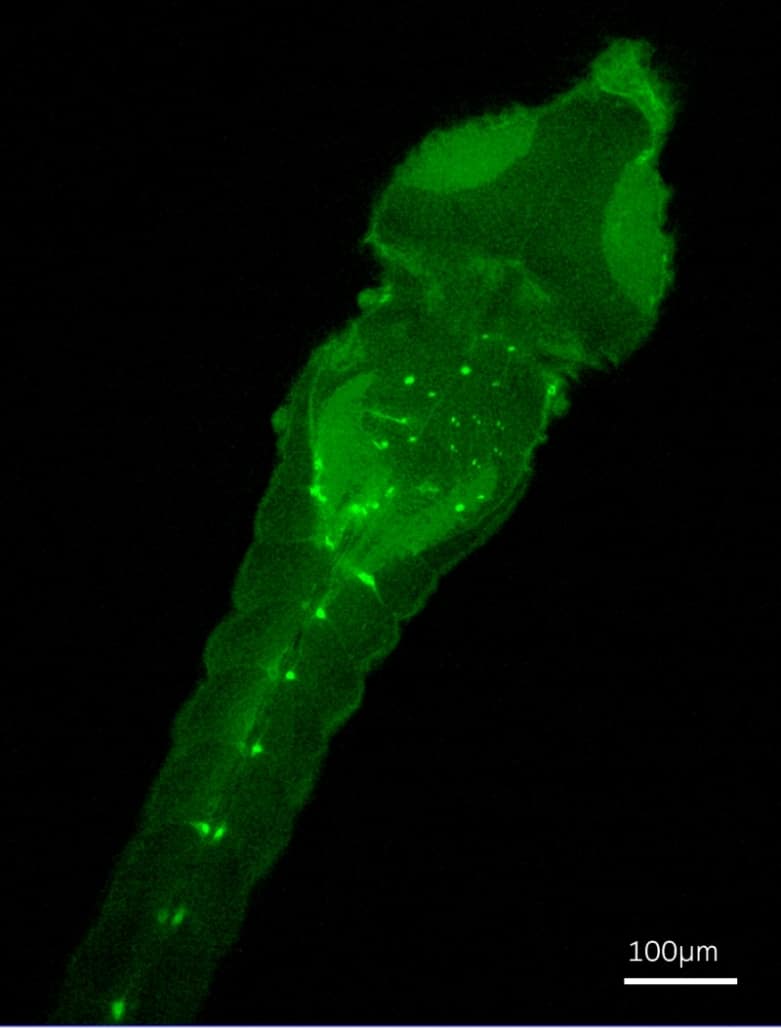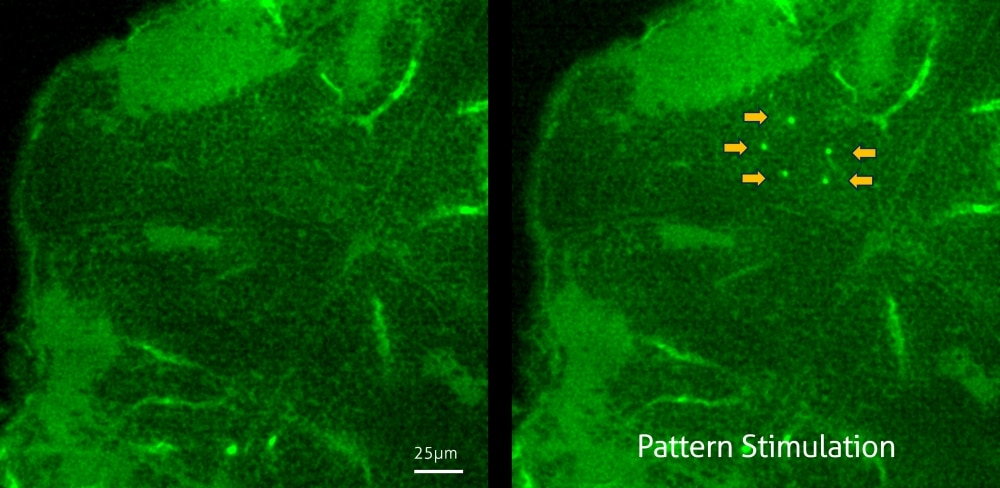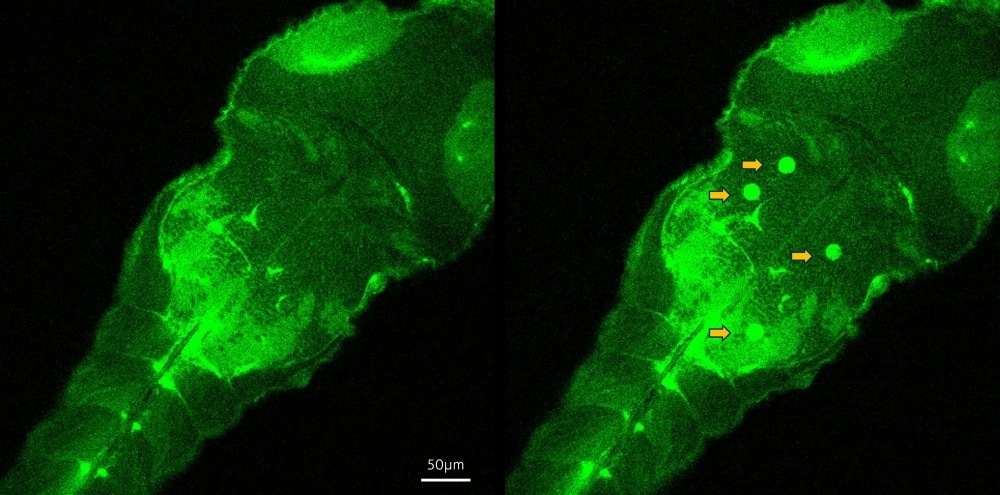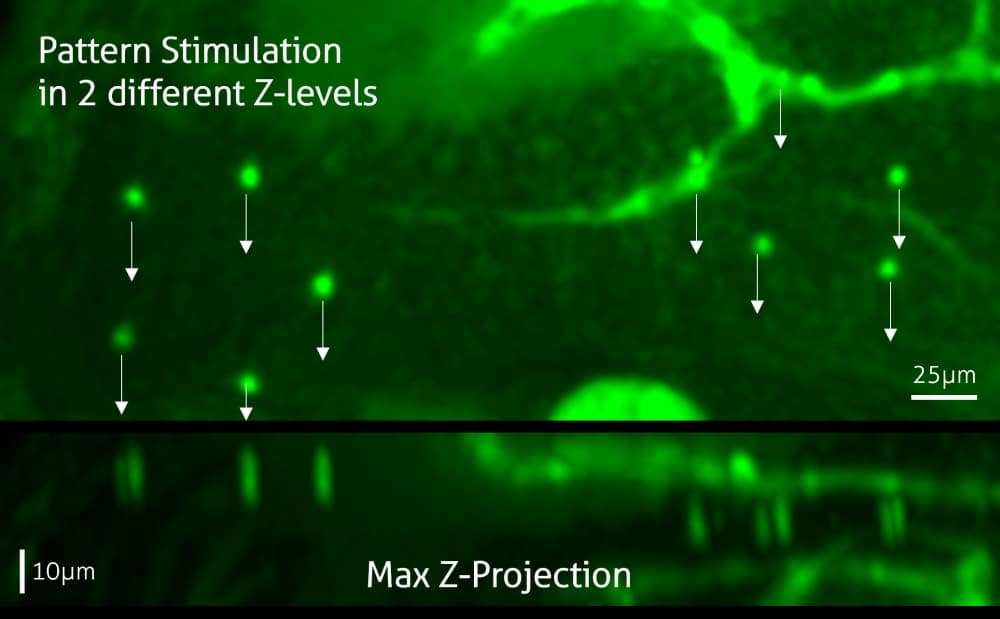HOLO4D
SLM-based Holographic Photomanipulation
Holographic photostimulation is based on Spatial Light Modulators (SLM). It merges holography and light modulation to precisely manipulate cellular activity in neuroscience and other biological fields. With the Holo4D device, the user can create intricate light patterns that are projected onto cells with extraordinary precision. This enables the targeted stimulation or inhibition of individual cells or cell clusters, which allows for the investigation of neural circuits, cellular interactions, and biological processes in unprecedented detail. By combining multi-photon-imaging and 3D holographic stimulation, researchers can visualize and control neuronal activity at cellular level.
- Holographic photomanipulation with high precision within a 3D volume.
- Stimulation with multiple simultaneous patterns.
- Multi-photon imaging with parallel two-photon holographic stimulation techniques.
Flexibility
- Add-on module to be integrated into two-photon microscopes such as the Sutter MOM, MIMMS, BOB, and DF-Scope and microscopes of other brands on special request.
- Holo4D can be added to existing microscopes, or as a bundle feature together with the purchase of a new microscope.
Easy-to-use
- Automated calibration function in 2D and 3D applications.
- Handshaking of Rapp’s SysCon software with the widely used imaging software ScanImage (MBF Bioscience).
- Easy integration and communication to behavioral and physiological devices and imaging software.

